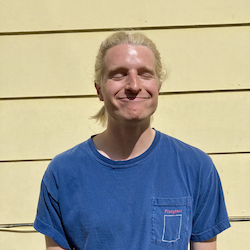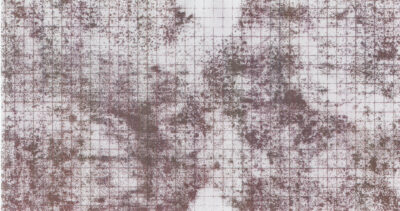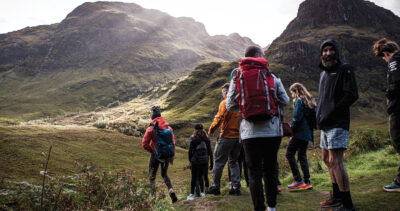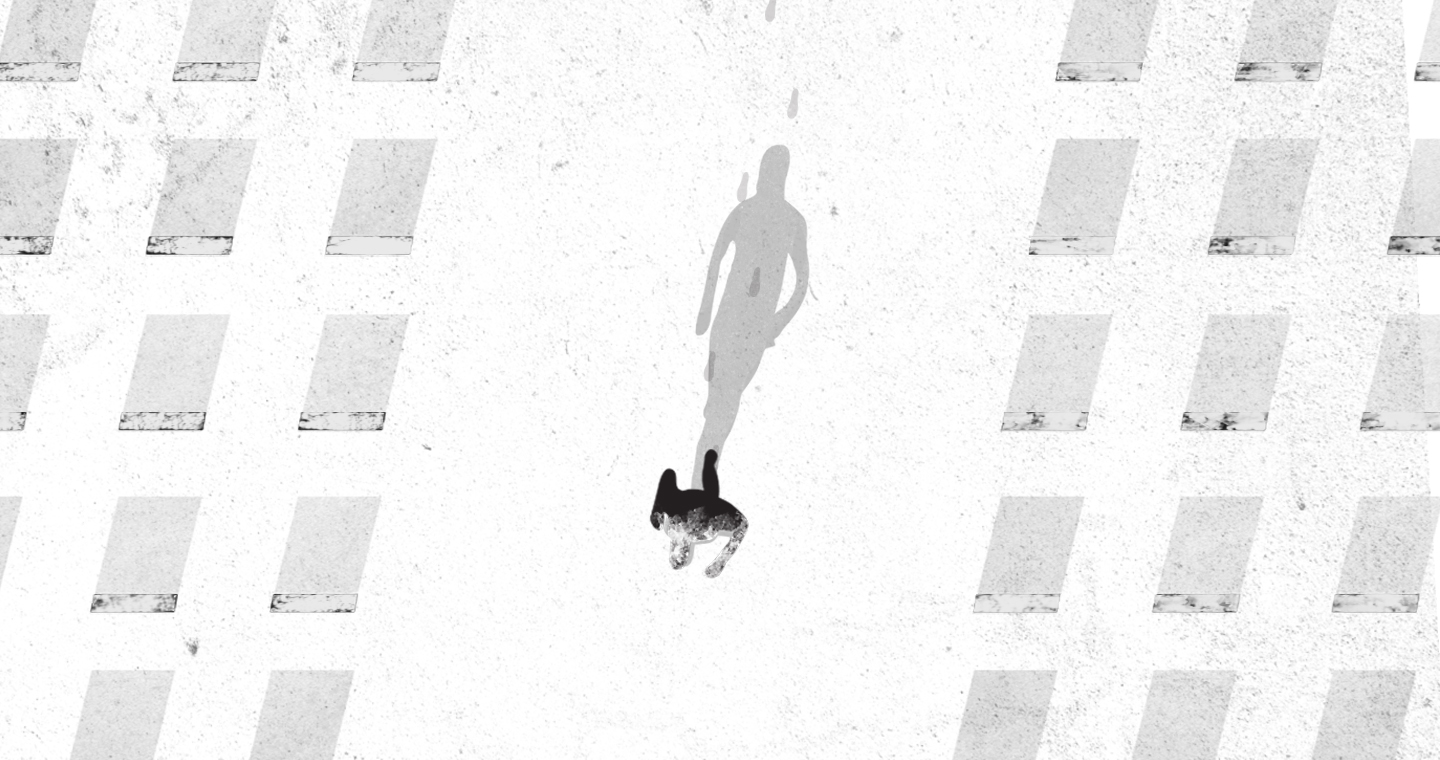
running through sunset hills
running through sunset hills
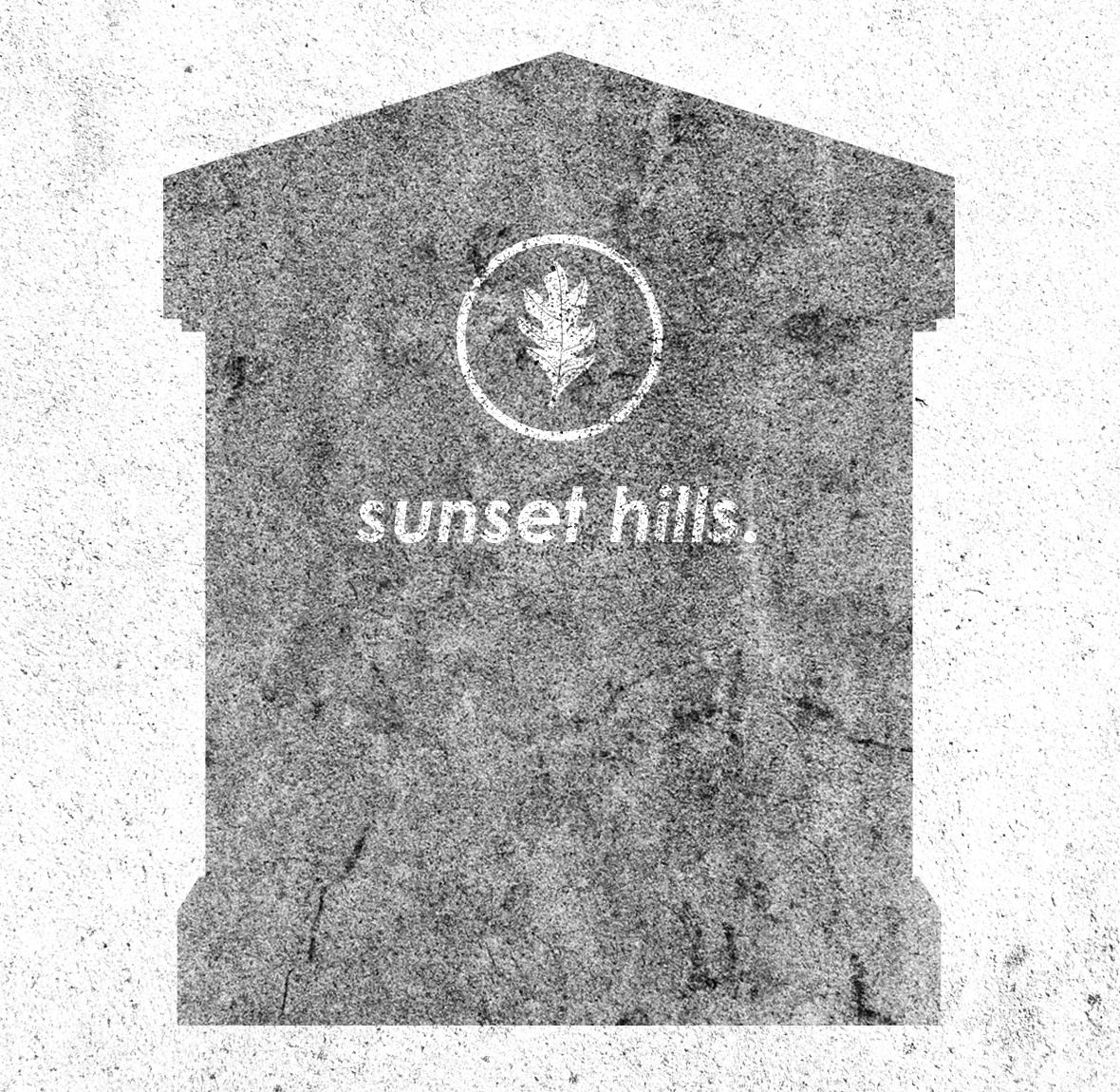
words x
north bennett
illustrations x
evan melnyk
The afternoon is an anomaly: a low of -22℃ and not yet November, with twenty centimeters of snow seemingly thrown to the ground in a single night two days prior. The nearby mountains endured twice as much. They glimmer white just outside of town, their many paths slicked, powdered, and covered clean. It is winter in the first half of fall. Just over two weeks ago, we had sun and a high of 27℃. Now, I worry how the cold might scorch my lungs.
Looking out the window, I notice snow-capped trees weighted down by frosty dead leaves. I see dried flower buds cupping plump marshmallows of snow, and bits of desiccated grass poking up from the powder’s repose. I read two metaphors for change: the wizened edge of a leaf’s decay, the blank slate of freshly whitened fields. Long, cold months stretch before me. I imagine monotonous lowland slogs, ice-slips and plunge-steps through wind drifts and slush piles. The front door freezes shut, gets pinned down by winter’s strengthening winds. Maybe, I think, the key to this Sunday’s long run is shaped differently. Maybe it stretches not dreadfully on and on, but folds instead into what I have privately come to call the Cemetery Run.
Looking out the window, I notice snow-capped trees weighted down by frosty dead leaves. I see dried flower buds cupping plump marshmallows of snow, and bits of desiccated grass poking up from the powder’s repose. I read two metaphors for change: the wizened edge of a leaf’s decay, the blank slate of freshly whitened fields. Long, cold months stretch before me. I imagine monotonous lowland slogs, ice-slips and plunge-steps through wind drifts and slush piles. The front door freezes shut, gets pinned down by winter’s strengthening winds. Maybe, I think, the key to this Sunday’s long run is shaped differently. Maybe it stretches not dreadfully on and on, but folds instead into what I have privately come to call the Cemetery Run.

I pass through Bozeman, Montana’s Sunset Hills Cemetery several times a week. It adds a necessary dogleg to several of my easy run loops, but only a short one—I’m never there for long. On this day, however, I plan to linger. Inspired by Rickey Gates’ Every Single Street project, I will run all of the cemetery’s paths. I will stop only for hunger, cold, or injury, and will hide my watch as I move among the graves. I have little notion of how long it will take, and even less of how much distance is involved. What I do know is that, already, the light is slanting gold at 3:30pm. My breath is freezing to my eyebrows only a few minutes from the door, and I don’t know if I’ll be able to keep my heat. It feels appropriate that the cemetery holds so many unknowns. Like the space between strides, the next step is suspended.
there is a special pleasure in embarking on a run of unknown duration or undetermined distance. it brings time closer.
When I set out on a long run, I check the clock and calculate progress in percentages. During speed workouts, my mind fixates on the intervals yet to come, and even easy runs sometimes have me ticking off sections, with each turn becoming an item on a to-do list. Too often, I dread a future that I think I know, but don’t—the winter will be bitter, the run, difficult. Today, I intend to discard these preconceptions in favor of open-endedness, curiosity. I will see what might be seen on a cold afternoon and pad about in weather that would, on other days, keep me in. I will dawdle somewhere I usually dash.
A kilometer of approach brings me to the arching north gate, which is open and plowed free of snow. I check my watch before entering, cover it with my sleeve, and then turn west, planning to trace the perimeter of the cemetery before turning to the grid inside. I run along a chain-linked fence, under fir and spruce and the occasional maple. Here are the old graves. I recognize street names from around town: Babcock, Mendenhall, Beall. I see a stone pyramid inscribed for Mary Blackmore, who fell ill on her way to Yellowstone National Park in the late nineteenth century. Her husband buried her here before any other bodies, and then proceded to establish the cemetery that exists on this hill today. Nearby, Greek pillars stand tall over a few stone steps, marking the entrance to the family plot of Nelson Story, the infamous Montana rancher and businessman. The facade used to welcome people into his house on Main Street, but was moved here after he built a mansion a few blocks from downtown.
Further south are newer, more humble memorials, many of which are covered entirely in snow. They go either unseen or rise in quiet mounds, like loaves of bread new to the proofer. Moving up the hill’s slant, the tenses change. The trees thin and there wait the empty plots, the present and future glittering, alive in the sunlight. Pavement gives way to gravel as I reach the top of the cemetery. Rounding the corner, I catch a glimpse of the Bridger range, which glistens tall above Gallatin Valley, its peaks like pearls too distant to clutch. I pass a memorial to veterans of the Vietnam War, and then turn north, descending back into the shade.
A kilometer of approach brings me to the arching north gate, which is open and plowed free of snow. I check my watch before entering, cover it with my sleeve, and then turn west, planning to trace the perimeter of the cemetery before turning to the grid inside. I run along a chain-linked fence, under fir and spruce and the occasional maple. Here are the old graves. I recognize street names from around town: Babcock, Mendenhall, Beall. I see a stone pyramid inscribed for Mary Blackmore, who fell ill on her way to Yellowstone National Park in the late nineteenth century. Her husband buried her here before any other bodies, and then proceded to establish the cemetery that exists on this hill today. Nearby, Greek pillars stand tall over a few stone steps, marking the entrance to the family plot of Nelson Story, the infamous Montana rancher and businessman. The facade used to welcome people into his house on Main Street, but was moved here after he built a mansion a few blocks from downtown.
Further south are newer, more humble memorials, many of which are covered entirely in snow. They go either unseen or rise in quiet mounds, like loaves of bread new to the proofer. Moving up the hill’s slant, the tenses change. The trees thin and there wait the empty plots, the present and future glittering, alive in the sunlight. Pavement gives way to gravel as I reach the top of the cemetery. Rounding the corner, I catch a glimpse of the Bridger range, which glistens tall above Gallatin Valley, its peaks like pearls too distant to clutch. I pass a memorial to veterans of the Vietnam War, and then turn north, descending back into the shade.
it is common to understand the pursuit of fitness as a sort of death-denial, a desperate clinging to the shapes, strengths, and vitalities of youth.
During moments of peak performance, a person can feel invincible—immortal, even—when in fact fitness only staves off the inevitable. Senescence is never more than a few steps down the trail. Striding under the trees, I think of Galway Kinnell’s poem, “The Tragedy of Bricks,” which remembers the dreadful labor of mill building. Brick after brick—slub clump slub clump—new workers become old workers become dead workers who lie stacked / somewhere here about. The poem is voiced in retrospect, taking the perspective of a mill-builder’s grown child as he visits the site many years later. Here come the joggers, it reads.
I am sixty-one. The joggers are approximately very young.
They run for fun through a world where everyone used to lay bricks
for work.
Their faces tell there is a hell and they will reach it.
The joggers quickly disappear from the poem, but still they are damned by their surroundings, their efforts made meaningless by the mill’s history of toil and repetition. However, back in the cemetery, running among the remains of ranchers, loggers, and other workers who lived hard lives on hostile land, I feel compelled to question that judgement.
Sensing life in my legs, I reject that effort must devolve into drudgery, that running must always be directed toward that which it intends to avoid. Here, I defer directionality in favor of something that wanders, something that treads on the past and present as much as the future.
I am sixty-one. The joggers are approximately very young.
They run for fun through a world where everyone used to lay bricks
for work.
Their faces tell there is a hell and they will reach it.
The joggers quickly disappear from the poem, but still they are damned by their surroundings, their efforts made meaningless by the mill’s history of toil and repetition. However, back in the cemetery, running among the remains of ranchers, loggers, and other workers who lived hard lives on hostile land, I feel compelled to question that judgement.
Sensing life in my legs, I reject that effort must devolve into drudgery, that running must always be directed toward that which it intends to avoid. Here, I defer directionality in favor of something that wanders, something that treads on the past and present as much as the future.
the joys on runs like this are thick and layered.
It may have snowed, but bouquets of summer flowers still poke their petals through the white. I see lilies and chrysanthemums, frozen but filled with color regardless. They rest warmly, placed with love beneath stones chiseled to persist. I exhale and my breath freezes in the air.
Once I complete the perimeter loop, I begin the longer task of filling it all in. I decide on a cross-hatch approach, going up and down before moving back and forth. It’s a strategy that makes sense for the grid that I imagine the cemetery to be, but which proves less efficient once put into practice. Sometimes, a southbound path terminates in the middle of a plot. I must then choose a side, which sets me off a block for the return trip north. I find myself double-backing and retreading, stumbling on unexpected roundabouts, side loops, and dead ends. I begin to question where I’ve been. The plot numbers, arranged in an order that I can’t decipher, offer little help, and so I must stay alert to the names on the graves, the unusual bushes, the notable turns. As I begin to tire, the details become monotonous. I hurry, and then must remind myself that a cemetery is no place for rushing.
Once I complete the perimeter loop, I begin the longer task of filling it all in. I decide on a cross-hatch approach, going up and down before moving back and forth. It’s a strategy that makes sense for the grid that I imagine the cemetery to be, but which proves less efficient once put into practice. Sometimes, a southbound path terminates in the middle of a plot. I must then choose a side, which sets me off a block for the return trip north. I find myself double-backing and retreading, stumbling on unexpected roundabouts, side loops, and dead ends. I begin to question where I’ve been. The plot numbers, arranged in an order that I can’t decipher, offer little help, and so I must stay alert to the names on the graves, the unusual bushes, the notable turns. As I begin to tire, the details become monotonous. I hurry, and then must remind myself that a cemetery is no place for rushing.
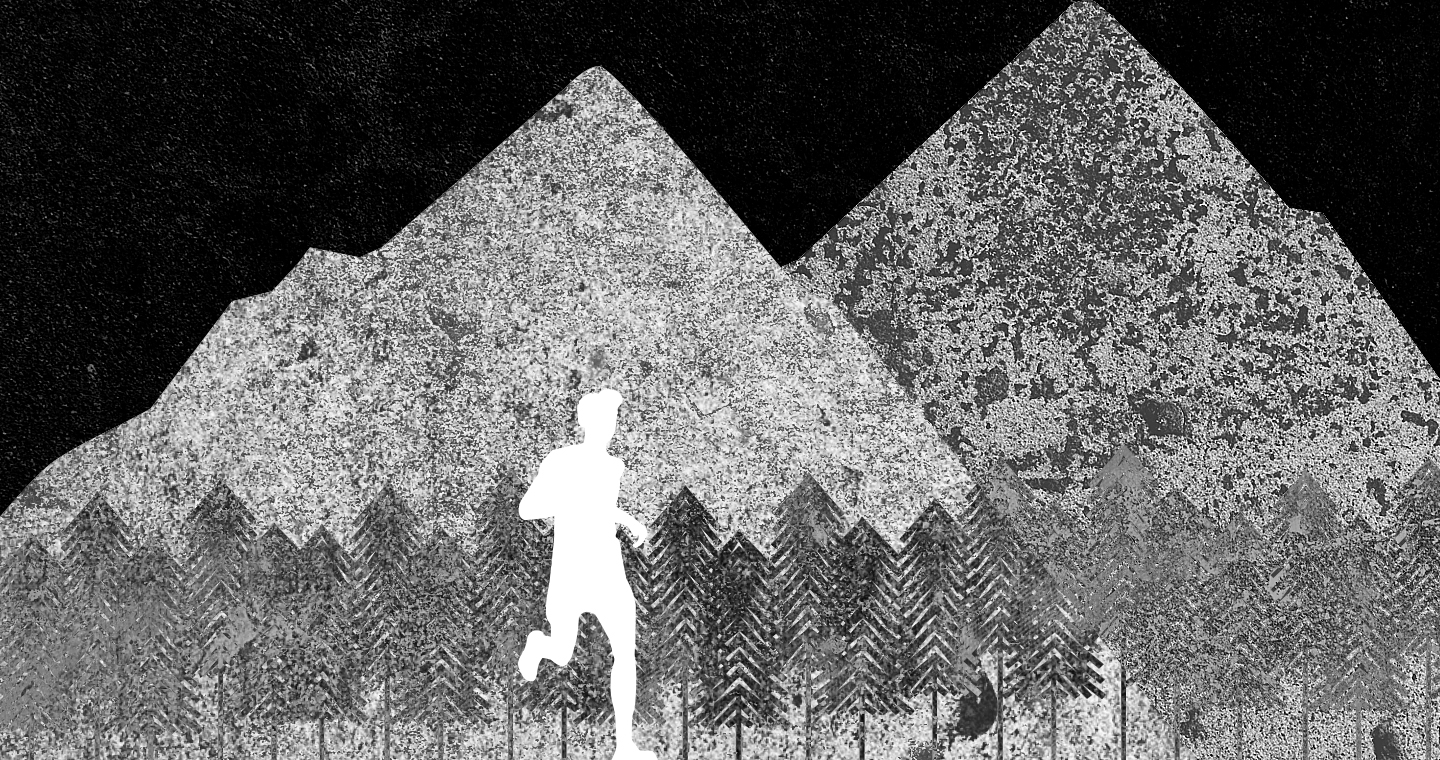
The sun lowers. The shade deepens. I go back and forth. My mind tires of remarking and relaxes into the quiet. The first snow always carries with it a certain stillness, a pristine sense of renewal. The winter will continue to refresh itself. The snow will reflect light even after dark. Now and in the months ahead, I will keep running, churning up heat in the cold. And although fatigue can make a brick out of each footstep—slub clump slub clump—today my feet still feel lively. I focus on relaxing my shoulders, smoothing my stride. Long winters are made of days like this one.
At last, I angle into the final crosshatch, the sun setting behind me. The road ahead shines yellow and gold. I aim toward a closed exit gate, jump it, and look at my watch. It’s only been an hour. The day is too nice to stop. I run past the cemetery and back toward the sun.
At last, I angle into the final crosshatch, the sun setting behind me. The road ahead shines yellow and gold. I aim toward a closed exit gate, jump it, and look at my watch. It’s only been an hour. The day is too nice to stop. I run past the cemetery and back toward the sun.
more articles


